
Layering Strength and Sustainability: The BOPP/BOPET Composite Film Revolution
2025-10-16 17:14Layering Strength and Sustainability: The BOPP/BOPET Composite Film Revolution 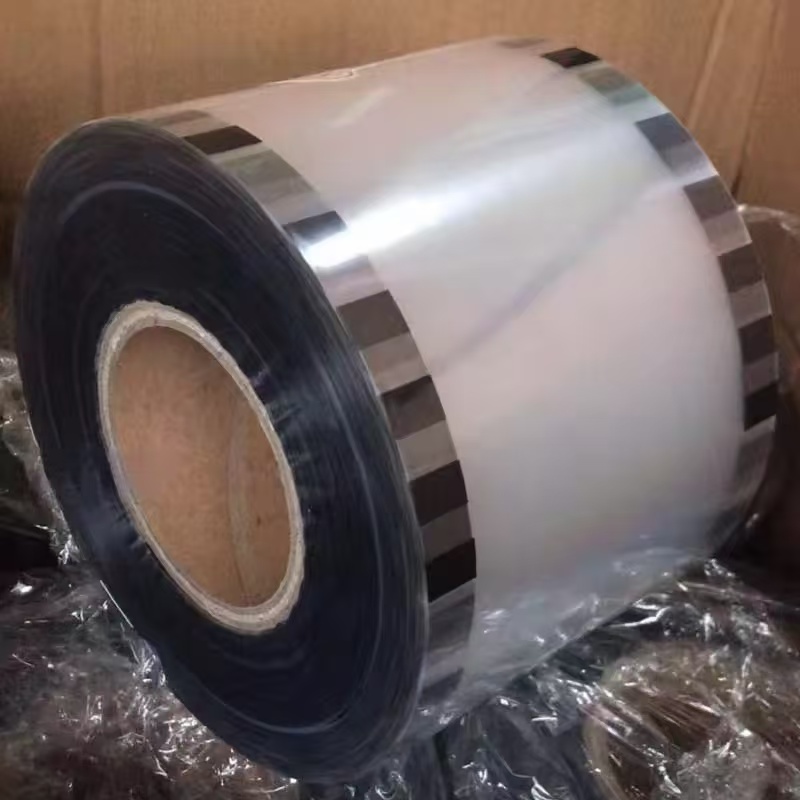 In the whirlwind of a high-volume snack production line, where golden potato chips cascade like autumn leaves into awaiting pouches, a thin, shimmering veil descends to seal their fate: the BOPP/BOPET composite film. This isn't your average plastic sheet—it's a masterful union of biaxially oriented polypropylene (BOPP) and biaxially oriented polyethylene terephthalate (BOPET), layered through lamination or co-extrusion into a symphony of protection and presentation. Imagine the crisp, moisture-repelling outer skin of BOPP embracing the robust, gas-blocking core of BOPET, creating a barrier that's as elegant as it is impenetrable. Born from the flat-die extrusion of polypropylene resins stretched in two directions for molecular alignment, then bonded to PET's crystalline structure via adhesives or heat, this composite film embodies the packaging world's quest for multifunctionality. With thicknesses ranging from 20 to 60 microns, it unfurls at speeds up to 500 meters per minute, transforming raw polymers into guardians of freshness that whisper sustainability in every crinkle.
In the whirlwind of a high-volume snack production line, where golden potato chips cascade like autumn leaves into awaiting pouches, a thin, shimmering veil descends to seal their fate: the BOPP/BOPET composite film. This isn't your average plastic sheet—it's a masterful union of biaxially oriented polypropylene (BOPP) and biaxially oriented polyethylene terephthalate (BOPET), layered through lamination or co-extrusion into a symphony of protection and presentation. Imagine the crisp, moisture-repelling outer skin of BOPP embracing the robust, gas-blocking core of BOPET, creating a barrier that's as elegant as it is impenetrable. Born from the flat-die extrusion of polypropylene resins stretched in two directions for molecular alignment, then bonded to PET's crystalline structure via adhesives or heat, this composite film embodies the packaging world's quest for multifunctionality. With thicknesses ranging from 20 to 60 microns, it unfurls at speeds up to 500 meters per minute, transforming raw polymers into guardians of freshness that whisper sustainability in every crinkle.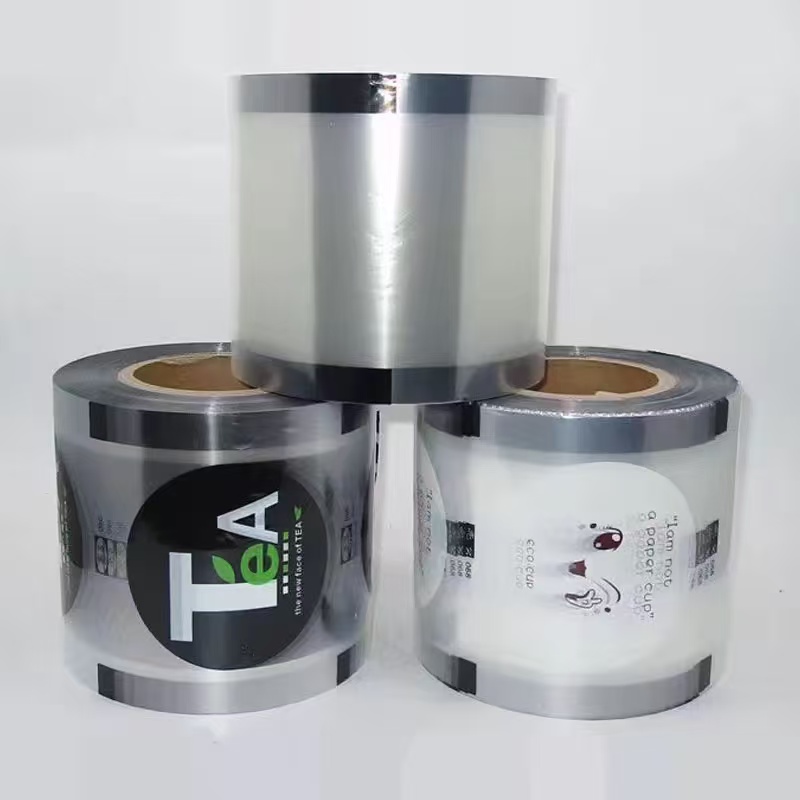 The allure of PET/PP composite film lies not in flash, but in fusion—where BOPP's lightweight agility meets BOPET's unyielding fortitude. This tandem isn't accidental; it's engineered precision, with the polypropylene layer providing a glossy canvas for eye-catching prints while the polyester underbelly fortifies against environmental foes. In an industry churning out over 50 million tons of flexible packaging annually, such composites cut material use by up to 20% compared to single-layer alternatives, all while elevating performance. But peel back the layers, and you'll uncover a tapestry of properties that make this film a staple in shelves from Tokyo's konbini to New York's delis.At its core, the mechanical might of PET/PP composite film is a marvel of biaxial orientation. BOPP contributes a tensile strength of 150-200 MPa, allowing the film to stretch over 150% before yielding, while BOPET amps it to 200-250 MPa, ensuring tear propagation resistance that rivals steel in relative terms. This duo withstands dart impacts exceeding 5 Joules in lab simulations, shrugging off the tumble from conveyor to cart without a whisper of rupture. Dimensional stability? Exemplary—the film's shrinkage under heat is less than 2% at 120°C, thanks to PET's high glass transition temperature of 70-80°C, preventing warps in retort processing. Surface smoothness, with a coefficient of friction under 0.3, glides through high-speed machinery, reducing jams by 30% in form-fill-seal operations.Barrier properties elevate it from good to guardian. BOPP's inherent hydrophobicity yields a water vapor transmission rate (WVTR) below 1 g/m²/day, while BOPET slashes oxygen permeability to under 50 cc/m²/day, a combo that starves oxidation in oxygen-hungry goods. When metallized or coated with EVOH in tri-laminate setups, barriers tighten further, achieving OTRs as low as 1 cc/m²/day—vital for extending shelf life by 50% in trials for nitrogen-flushed packs. Optical clarity dances at 90% transmission for the transparent variant, with gloss levels topping 85 GU, turning mundane wraps into marketing magnets. Yet, opacity options via pigments or metallization block 99% of UV rays, shielding light-sensitive flavors from fade.
The allure of PET/PP composite film lies not in flash, but in fusion—where BOPP's lightweight agility meets BOPET's unyielding fortitude. This tandem isn't accidental; it's engineered precision, with the polypropylene layer providing a glossy canvas for eye-catching prints while the polyester underbelly fortifies against environmental foes. In an industry churning out over 50 million tons of flexible packaging annually, such composites cut material use by up to 20% compared to single-layer alternatives, all while elevating performance. But peel back the layers, and you'll uncover a tapestry of properties that make this film a staple in shelves from Tokyo's konbini to New York's delis.At its core, the mechanical might of PET/PP composite film is a marvel of biaxial orientation. BOPP contributes a tensile strength of 150-200 MPa, allowing the film to stretch over 150% before yielding, while BOPET amps it to 200-250 MPa, ensuring tear propagation resistance that rivals steel in relative terms. This duo withstands dart impacts exceeding 5 Joules in lab simulations, shrugging off the tumble from conveyor to cart without a whisper of rupture. Dimensional stability? Exemplary—the film's shrinkage under heat is less than 2% at 120°C, thanks to PET's high glass transition temperature of 70-80°C, preventing warps in retort processing. Surface smoothness, with a coefficient of friction under 0.3, glides through high-speed machinery, reducing jams by 30% in form-fill-seal operations.Barrier properties elevate it from good to guardian. BOPP's inherent hydrophobicity yields a water vapor transmission rate (WVTR) below 1 g/m²/day, while BOPET slashes oxygen permeability to under 50 cc/m²/day, a combo that starves oxidation in oxygen-hungry goods. When metallized or coated with EVOH in tri-laminate setups, barriers tighten further, achieving OTRs as low as 1 cc/m²/day—vital for extending shelf life by 50% in trials for nitrogen-flushed packs. Optical clarity dances at 90% transmission for the transparent variant, with gloss levels topping 85 GU, turning mundane wraps into marketing magnets. Yet, opacity options via pigments or metallization block 99% of UV rays, shielding light-sensitive flavors from fade.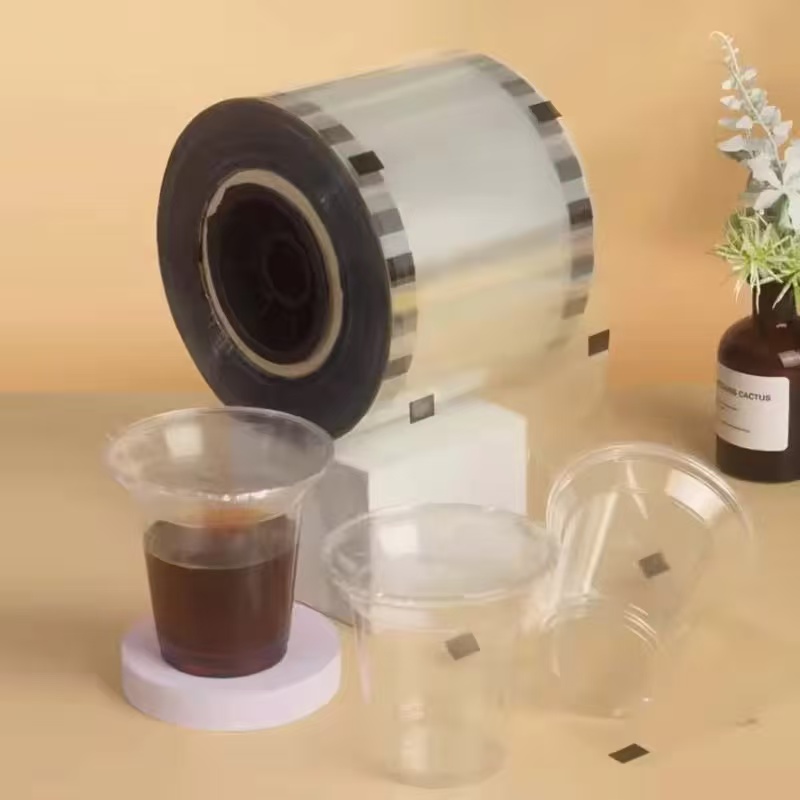 Thermal resilience rounds the profile: service temperatures from -40°C to 150°C, with BOPET's melt point at 260°C enabling autoclave sterilization without delamination. Chemical inertness complies with FDA and EU 10/2011 for food contact, migrating less than 10 mg/dm², while recyclability shines—mono-material streams process 95% recovery rates, aligning with circular economy mandates. Printability? Corona-treated surfaces boast 38-42 dynes/cm wettability, gripping solvent or UV inks for resolutions up to 300 dpi, vibrant enough to make a bag of crisps a collector's item. Electrical insulation, with dielectric strength over 200 kV/mm, opens doors beyond food, into capacitive touch foils. These aren't armchair specs; ASTM D882 and ISO 7765 certifications back them, proving the film's mettle in real-world rigors.These attributes propel PET/PP composite film into the heart of food packaging, where crunch meets longevity in the battle against staleness. Envision a bustling bakery in Paris's Marais district: fresh baguettes, still warm from wood-fired ovens, slip into slender pouches of transparent PET/PP laminate. Here, the BOPP outer layer's printability adorns the film with artisanal flourishes—a Eiffel silhouette in gold foil—while the BOPET inner seals in aroma, its gas barrier curbing CO2 loss that would otherwise deflate the loaf's crusty pride. Laminated via dry bonding with polyurethane adhesives, the 30-micron structure seals at 140°C, forming fin or lap configurations that withstand 5N/cm peel forces, ensuring no leaks during the 48-hour journey to export crates.
Thermal resilience rounds the profile: service temperatures from -40°C to 150°C, with BOPET's melt point at 260°C enabling autoclave sterilization without delamination. Chemical inertness complies with FDA and EU 10/2011 for food contact, migrating less than 10 mg/dm², while recyclability shines—mono-material streams process 95% recovery rates, aligning with circular economy mandates. Printability? Corona-treated surfaces boast 38-42 dynes/cm wettability, gripping solvent or UV inks for resolutions up to 300 dpi, vibrant enough to make a bag of crisps a collector's item. Electrical insulation, with dielectric strength over 200 kV/mm, opens doors beyond food, into capacitive touch foils. These aren't armchair specs; ASTM D882 and ISO 7765 certifications back them, proving the film's mettle in real-world rigors.These attributes propel PET/PP composite film into the heart of food packaging, where crunch meets longevity in the battle against staleness. Envision a bustling bakery in Paris's Marais district: fresh baguettes, still warm from wood-fired ovens, slip into slender pouches of transparent PET/PP laminate. Here, the BOPP outer layer's printability adorns the film with artisanal flourishes—a Eiffel silhouette in gold foil—while the BOPET inner seals in aroma, its gas barrier curbing CO2 loss that would otherwise deflate the loaf's crusty pride. Laminated via dry bonding with polyurethane adhesives, the 30-micron structure seals at 140°C, forming fin or lap configurations that withstand 5N/cm peel forces, ensuring no leaks during the 48-hour journey to export crates.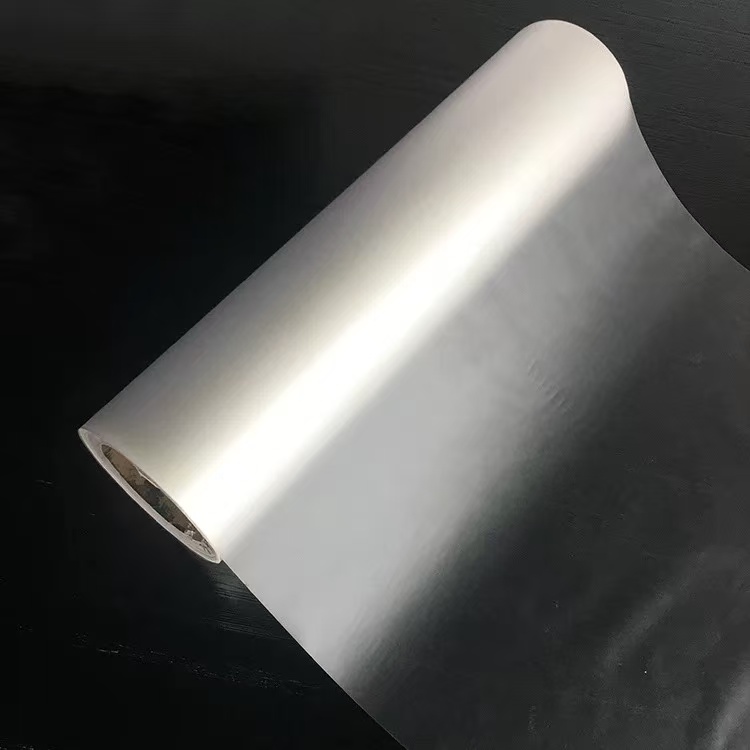 For snack giants, it's a revelation. In a Midwest U.S. facility, torrents of cheese puffs tumble into stand-up pouches, the film's moisture barrier—enhanced by BOPP's low WVTR—keeping humidity at bay in humid summers, reducing sogginess complaints by 40% per consumer feedback loops. A 2024 industry benchmark showed such laminates extending crispness from 3 to 6 months, with puncture resistance absorbing forklift prangs unscathed. Beyond breads and bites, frozen fare thrives: vegetable medleys in retortable trays, where PET's heat tolerance handles 121°C steam without haze, the composite's clarity letting green hues pop under store lights. In Asia's spice markets, curry powders stay potent in metallized variants, the AlOx coating on BOPET slashing OTR by 90%, preserving volatile oils that would evaporate in lesser wraps. This isn't just containment; it's culinary conservation, where every resealable zipper reveals a product as factory-fresh as day one, backed by HACCP validations.Shifting from the freezer aisle to the labeling lanes, PET/PP composite film reimagines branding as a tactile triumph. Picture a vineyard in Tuscany at harvest: bottles of Chianti, their labels unfurling from rolls of matte BOPP/BOPET laminate, the polypropylene's rigidity ensuring wrinkle-free application on high-speed rotary lines, while PET's dimensional stability prevents curl in humid cellars. At 25 microns, the film bonds via hot-melt or water-based adhesives, its opacity variants hiding recycled glass flaws while transparent ones showcase embossed wax seals. Gloss differentials—85 GU on one side, 20 on the reverse—create premium textures, fooling fingers into luxury.In retail realms, shrink sleeves for beverages hug contours like a second skin. A Brazilian bottler of guarana soda wraps 500,000 units daily, the composite's shrink rate of 60% at 90°C conforming seamlessly, BOPET's strength resisting tears from chilled transport. UV blockers preserve label vibrancy, withstanding 1000 hours of QUV exposure sans yellowing. For eco-brands, recyclable grades with 50% bio-PP cut carbon footprints by 25%, per lifecycle assessments, appealing to 70% of millennials scanning for green cues. Beyond bottles, pressure-sensitive labels for jams adorn shelves, the film's conformability wrapping jars without bridging, inks holding fast through steam sterilizations. In this gallery of goods, PET/PP film doesn't just stick—it stories, turning products into personalities with permanence.Venturing into pharmaceutical enclosures, the film's precision packaging safeguards doses with unerring fidelity. Imagine a sterile cleanroom in Switzerland: blister cards for analgesics form under vacuum, the BOPP/BOPET laminate thermoformed at 160°C into cavities that cradle caplets with 0.1mm accuracy. BOPET's gas barrier thwarts moisture ingress, maintaining efficacy for hygroscopic actives like aspirin, where single-layer foils falter. Laminated to PVC or foil, the 40-micron stack seals inductively, burst strengths over 20N ensuring child-proof integrity per ISO 8317.For overwraps on syringes or vials, the composite's clarity aids inspection, transmitting 92% light while opacity options shield photosensitive injectables like insulin from depot degradation. A European pharmacopeia trial logged 35% longer stability in ambient storage, crediting the OTR below 10 cc/m²/day. Tamper-evident features, via patterned seals, comply with DSCSA serialization, QR codes printed razor-sharp on BOPP's receptive surface. In tropical exports, PET's thermal span prevents softening in 40°C holds, puncture tests confirming no breaches after 2m drops. Here, the film transcends wrap—it's a wellness ward, where every layer layers trust, evidenced by GMP audits praising its migrant-free profile under 60°C simulations.
For snack giants, it's a revelation. In a Midwest U.S. facility, torrents of cheese puffs tumble into stand-up pouches, the film's moisture barrier—enhanced by BOPP's low WVTR—keeping humidity at bay in humid summers, reducing sogginess complaints by 40% per consumer feedback loops. A 2024 industry benchmark showed such laminates extending crispness from 3 to 6 months, with puncture resistance absorbing forklift prangs unscathed. Beyond breads and bites, frozen fare thrives: vegetable medleys in retortable trays, where PET's heat tolerance handles 121°C steam without haze, the composite's clarity letting green hues pop under store lights. In Asia's spice markets, curry powders stay potent in metallized variants, the AlOx coating on BOPET slashing OTR by 90%, preserving volatile oils that would evaporate in lesser wraps. This isn't just containment; it's culinary conservation, where every resealable zipper reveals a product as factory-fresh as day one, backed by HACCP validations.Shifting from the freezer aisle to the labeling lanes, PET/PP composite film reimagines branding as a tactile triumph. Picture a vineyard in Tuscany at harvest: bottles of Chianti, their labels unfurling from rolls of matte BOPP/BOPET laminate, the polypropylene's rigidity ensuring wrinkle-free application on high-speed rotary lines, while PET's dimensional stability prevents curl in humid cellars. At 25 microns, the film bonds via hot-melt or water-based adhesives, its opacity variants hiding recycled glass flaws while transparent ones showcase embossed wax seals. Gloss differentials—85 GU on one side, 20 on the reverse—create premium textures, fooling fingers into luxury.In retail realms, shrink sleeves for beverages hug contours like a second skin. A Brazilian bottler of guarana soda wraps 500,000 units daily, the composite's shrink rate of 60% at 90°C conforming seamlessly, BOPET's strength resisting tears from chilled transport. UV blockers preserve label vibrancy, withstanding 1000 hours of QUV exposure sans yellowing. For eco-brands, recyclable grades with 50% bio-PP cut carbon footprints by 25%, per lifecycle assessments, appealing to 70% of millennials scanning for green cues. Beyond bottles, pressure-sensitive labels for jams adorn shelves, the film's conformability wrapping jars without bridging, inks holding fast through steam sterilizations. In this gallery of goods, PET/PP film doesn't just stick—it stories, turning products into personalities with permanence.Venturing into pharmaceutical enclosures, the film's precision packaging safeguards doses with unerring fidelity. Imagine a sterile cleanroom in Switzerland: blister cards for analgesics form under vacuum, the BOPP/BOPET laminate thermoformed at 160°C into cavities that cradle caplets with 0.1mm accuracy. BOPET's gas barrier thwarts moisture ingress, maintaining efficacy for hygroscopic actives like aspirin, where single-layer foils falter. Laminated to PVC or foil, the 40-micron stack seals inductively, burst strengths over 20N ensuring child-proof integrity per ISO 8317.For overwraps on syringes or vials, the composite's clarity aids inspection, transmitting 92% light while opacity options shield photosensitive injectables like insulin from depot degradation. A European pharmacopeia trial logged 35% longer stability in ambient storage, crediting the OTR below 10 cc/m²/day. Tamper-evident features, via patterned seals, comply with DSCSA serialization, QR codes printed razor-sharp on BOPP's receptive surface. In tropical exports, PET's thermal span prevents softening in 40°C holds, puncture tests confirming no breaches after 2m drops. Here, the film transcends wrap—it's a wellness ward, where every layer layers trust, evidenced by GMP audits praising its migrant-free profile under 60°C simulations.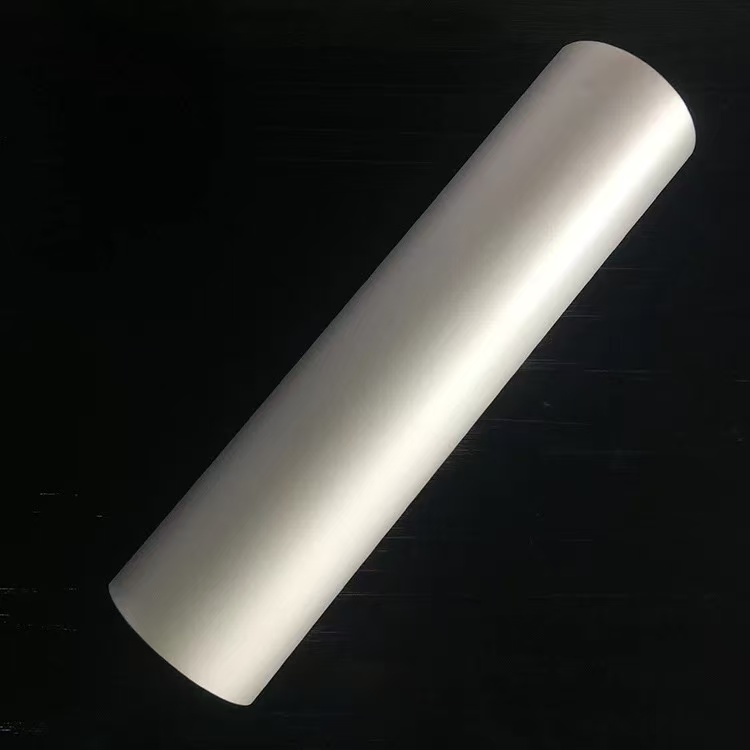 Beyond these bastions, PET/PP composite film flexes into industrial tapes and agricultural mulch, where BOPP's adhesion pairs with PET's durability for strapping that binds pallets unyieldingly. In greenhouses, UV-stabilized variants diffuse light evenly, boosting yields by 15% in tomato trials. Challenges? Adhesive compatibility demands solventless tech to cut VOCs, and thickness uniformity requires inline gauging, but innovations like nano-clay fillers hike barriers 40% without bulk.
Beyond these bastions, PET/PP composite film flexes into industrial tapes and agricultural mulch, where BOPP's adhesion pairs with PET's durability for strapping that binds pallets unyieldingly. In greenhouses, UV-stabilized variants diffuse light evenly, boosting yields by 15% in tomato trials. Challenges? Adhesive compatibility demands solventless tech to cut VOCs, and thickness uniformity requires inline gauging, but innovations like nano-clay fillers hike barriers 40% without bulk.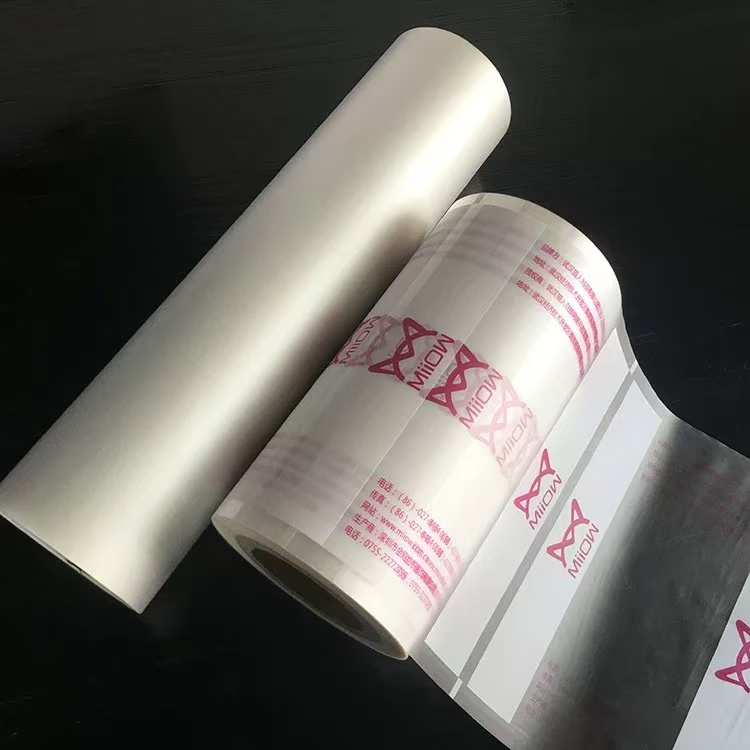 In essence, PET/PP composite film is the unsung architect of abundance, layering BOPP's verve with BOPET's valor to cradle our consumables. From the satisfying rip of a chip bag to the reassuring seal on a medicine strip, it proves synergy saves: stronger, smarter, sustainably. As packaging evolves toward net-zero, this film's roll endures, inviting us to wrap the world wiser—one laminate at a time.
In essence, PET/PP composite film is the unsung architect of abundance, layering BOPP's verve with BOPET's valor to cradle our consumables. From the satisfying rip of a chip bag to the reassuring seal on a medicine strip, it proves synergy saves: stronger, smarter, sustainably. As packaging evolves toward net-zero, this film's roll endures, inviting us to wrap the world wiser—one laminate at a time. 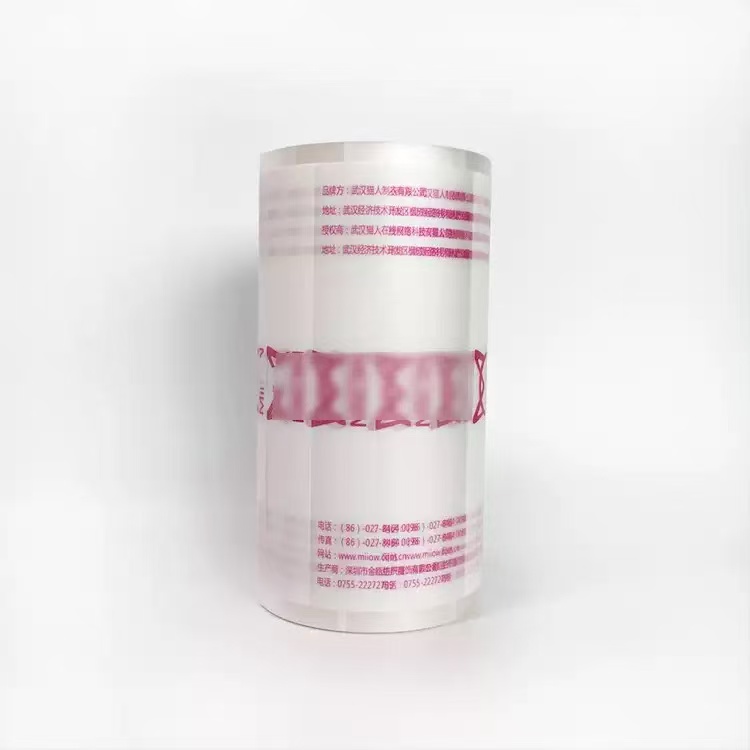
 In the whirlwind of a high-volume snack production line, where golden potato chips cascade like autumn leaves into awaiting pouches, a thin, shimmering veil descends to seal their fate: the BOPP/BOPET composite film. This isn't your average plastic sheet—it's a masterful union of biaxially oriented polypropylene (BOPP) and biaxially oriented polyethylene terephthalate (BOPET), layered through lamination or co-extrusion into a symphony of protection and presentation. Imagine the crisp, moisture-repelling outer skin of BOPP embracing the robust, gas-blocking core of BOPET, creating a barrier that's as elegant as it is impenetrable. Born from the flat-die extrusion of polypropylene resins stretched in two directions for molecular alignment, then bonded to PET's crystalline structure via adhesives or heat, this composite film embodies the packaging world's quest for multifunctionality. With thicknesses ranging from 20 to 60 microns, it unfurls at speeds up to 500 meters per minute, transforming raw polymers into guardians of freshness that whisper sustainability in every crinkle.
In the whirlwind of a high-volume snack production line, where golden potato chips cascade like autumn leaves into awaiting pouches, a thin, shimmering veil descends to seal their fate: the BOPP/BOPET composite film. This isn't your average plastic sheet—it's a masterful union of biaxially oriented polypropylene (BOPP) and biaxially oriented polyethylene terephthalate (BOPET), layered through lamination or co-extrusion into a symphony of protection and presentation. Imagine the crisp, moisture-repelling outer skin of BOPP embracing the robust, gas-blocking core of BOPET, creating a barrier that's as elegant as it is impenetrable. Born from the flat-die extrusion of polypropylene resins stretched in two directions for molecular alignment, then bonded to PET's crystalline structure via adhesives or heat, this composite film embodies the packaging world's quest for multifunctionality. With thicknesses ranging from 20 to 60 microns, it unfurls at speeds up to 500 meters per minute, transforming raw polymers into guardians of freshness that whisper sustainability in every crinkle. The allure of PET/PP composite film lies not in flash, but in fusion—where BOPP's lightweight agility meets BOPET's unyielding fortitude. This tandem isn't accidental; it's engineered precision, with the polypropylene layer providing a glossy canvas for eye-catching prints while the polyester underbelly fortifies against environmental foes. In an industry churning out over 50 million tons of flexible packaging annually, such composites cut material use by up to 20% compared to single-layer alternatives, all while elevating performance. But peel back the layers, and you'll uncover a tapestry of properties that make this film a staple in shelves from Tokyo's konbini to New York's delis.At its core, the mechanical might of PET/PP composite film is a marvel of biaxial orientation. BOPP contributes a tensile strength of 150-200 MPa, allowing the film to stretch over 150% before yielding, while BOPET amps it to 200-250 MPa, ensuring tear propagation resistance that rivals steel in relative terms. This duo withstands dart impacts exceeding 5 Joules in lab simulations, shrugging off the tumble from conveyor to cart without a whisper of rupture. Dimensional stability? Exemplary—the film's shrinkage under heat is less than 2% at 120°C, thanks to PET's high glass transition temperature of 70-80°C, preventing warps in retort processing. Surface smoothness, with a coefficient of friction under 0.3, glides through high-speed machinery, reducing jams by 30% in form-fill-seal operations.Barrier properties elevate it from good to guardian. BOPP's inherent hydrophobicity yields a water vapor transmission rate (WVTR) below 1 g/m²/day, while BOPET slashes oxygen permeability to under 50 cc/m²/day, a combo that starves oxidation in oxygen-hungry goods. When metallized or coated with EVOH in tri-laminate setups, barriers tighten further, achieving OTRs as low as 1 cc/m²/day—vital for extending shelf life by 50% in trials for nitrogen-flushed packs. Optical clarity dances at 90% transmission for the transparent variant, with gloss levels topping 85 GU, turning mundane wraps into marketing magnets. Yet, opacity options via pigments or metallization block 99% of UV rays, shielding light-sensitive flavors from fade.
The allure of PET/PP composite film lies not in flash, but in fusion—where BOPP's lightweight agility meets BOPET's unyielding fortitude. This tandem isn't accidental; it's engineered precision, with the polypropylene layer providing a glossy canvas for eye-catching prints while the polyester underbelly fortifies against environmental foes. In an industry churning out over 50 million tons of flexible packaging annually, such composites cut material use by up to 20% compared to single-layer alternatives, all while elevating performance. But peel back the layers, and you'll uncover a tapestry of properties that make this film a staple in shelves from Tokyo's konbini to New York's delis.At its core, the mechanical might of PET/PP composite film is a marvel of biaxial orientation. BOPP contributes a tensile strength of 150-200 MPa, allowing the film to stretch over 150% before yielding, while BOPET amps it to 200-250 MPa, ensuring tear propagation resistance that rivals steel in relative terms. This duo withstands dart impacts exceeding 5 Joules in lab simulations, shrugging off the tumble from conveyor to cart without a whisper of rupture. Dimensional stability? Exemplary—the film's shrinkage under heat is less than 2% at 120°C, thanks to PET's high glass transition temperature of 70-80°C, preventing warps in retort processing. Surface smoothness, with a coefficient of friction under 0.3, glides through high-speed machinery, reducing jams by 30% in form-fill-seal operations.Barrier properties elevate it from good to guardian. BOPP's inherent hydrophobicity yields a water vapor transmission rate (WVTR) below 1 g/m²/day, while BOPET slashes oxygen permeability to under 50 cc/m²/day, a combo that starves oxidation in oxygen-hungry goods. When metallized or coated with EVOH in tri-laminate setups, barriers tighten further, achieving OTRs as low as 1 cc/m²/day—vital for extending shelf life by 50% in trials for nitrogen-flushed packs. Optical clarity dances at 90% transmission for the transparent variant, with gloss levels topping 85 GU, turning mundane wraps into marketing magnets. Yet, opacity options via pigments or metallization block 99% of UV rays, shielding light-sensitive flavors from fade. Thermal resilience rounds the profile: service temperatures from -40°C to 150°C, with BOPET's melt point at 260°C enabling autoclave sterilization without delamination. Chemical inertness complies with FDA and EU 10/2011 for food contact, migrating less than 10 mg/dm², while recyclability shines—mono-material streams process 95% recovery rates, aligning with circular economy mandates. Printability? Corona-treated surfaces boast 38-42 dynes/cm wettability, gripping solvent or UV inks for resolutions up to 300 dpi, vibrant enough to make a bag of crisps a collector's item. Electrical insulation, with dielectric strength over 200 kV/mm, opens doors beyond food, into capacitive touch foils. These aren't armchair specs; ASTM D882 and ISO 7765 certifications back them, proving the film's mettle in real-world rigors.These attributes propel PET/PP composite film into the heart of food packaging, where crunch meets longevity in the battle against staleness. Envision a bustling bakery in Paris's Marais district: fresh baguettes, still warm from wood-fired ovens, slip into slender pouches of transparent PET/PP laminate. Here, the BOPP outer layer's printability adorns the film with artisanal flourishes—a Eiffel silhouette in gold foil—while the BOPET inner seals in aroma, its gas barrier curbing CO2 loss that would otherwise deflate the loaf's crusty pride. Laminated via dry bonding with polyurethane adhesives, the 30-micron structure seals at 140°C, forming fin or lap configurations that withstand 5N/cm peel forces, ensuring no leaks during the 48-hour journey to export crates.
Thermal resilience rounds the profile: service temperatures from -40°C to 150°C, with BOPET's melt point at 260°C enabling autoclave sterilization without delamination. Chemical inertness complies with FDA and EU 10/2011 for food contact, migrating less than 10 mg/dm², while recyclability shines—mono-material streams process 95% recovery rates, aligning with circular economy mandates. Printability? Corona-treated surfaces boast 38-42 dynes/cm wettability, gripping solvent or UV inks for resolutions up to 300 dpi, vibrant enough to make a bag of crisps a collector's item. Electrical insulation, with dielectric strength over 200 kV/mm, opens doors beyond food, into capacitive touch foils. These aren't armchair specs; ASTM D882 and ISO 7765 certifications back them, proving the film's mettle in real-world rigors.These attributes propel PET/PP composite film into the heart of food packaging, where crunch meets longevity in the battle against staleness. Envision a bustling bakery in Paris's Marais district: fresh baguettes, still warm from wood-fired ovens, slip into slender pouches of transparent PET/PP laminate. Here, the BOPP outer layer's printability adorns the film with artisanal flourishes—a Eiffel silhouette in gold foil—while the BOPET inner seals in aroma, its gas barrier curbing CO2 loss that would otherwise deflate the loaf's crusty pride. Laminated via dry bonding with polyurethane adhesives, the 30-micron structure seals at 140°C, forming fin or lap configurations that withstand 5N/cm peel forces, ensuring no leaks during the 48-hour journey to export crates. For snack giants, it's a revelation. In a Midwest U.S. facility, torrents of cheese puffs tumble into stand-up pouches, the film's moisture barrier—enhanced by BOPP's low WVTR—keeping humidity at bay in humid summers, reducing sogginess complaints by 40% per consumer feedback loops. A 2024 industry benchmark showed such laminates extending crispness from 3 to 6 months, with puncture resistance absorbing forklift prangs unscathed. Beyond breads and bites, frozen fare thrives: vegetable medleys in retortable trays, where PET's heat tolerance handles 121°C steam without haze, the composite's clarity letting green hues pop under store lights. In Asia's spice markets, curry powders stay potent in metallized variants, the AlOx coating on BOPET slashing OTR by 90%, preserving volatile oils that would evaporate in lesser wraps. This isn't just containment; it's culinary conservation, where every resealable zipper reveals a product as factory-fresh as day one, backed by HACCP validations.Shifting from the freezer aisle to the labeling lanes, PET/PP composite film reimagines branding as a tactile triumph. Picture a vineyard in Tuscany at harvest: bottles of Chianti, their labels unfurling from rolls of matte BOPP/BOPET laminate, the polypropylene's rigidity ensuring wrinkle-free application on high-speed rotary lines, while PET's dimensional stability prevents curl in humid cellars. At 25 microns, the film bonds via hot-melt or water-based adhesives, its opacity variants hiding recycled glass flaws while transparent ones showcase embossed wax seals. Gloss differentials—85 GU on one side, 20 on the reverse—create premium textures, fooling fingers into luxury.In retail realms, shrink sleeves for beverages hug contours like a second skin. A Brazilian bottler of guarana soda wraps 500,000 units daily, the composite's shrink rate of 60% at 90°C conforming seamlessly, BOPET's strength resisting tears from chilled transport. UV blockers preserve label vibrancy, withstanding 1000 hours of QUV exposure sans yellowing. For eco-brands, recyclable grades with 50% bio-PP cut carbon footprints by 25%, per lifecycle assessments, appealing to 70% of millennials scanning for green cues. Beyond bottles, pressure-sensitive labels for jams adorn shelves, the film's conformability wrapping jars without bridging, inks holding fast through steam sterilizations. In this gallery of goods, PET/PP film doesn't just stick—it stories, turning products into personalities with permanence.Venturing into pharmaceutical enclosures, the film's precision packaging safeguards doses with unerring fidelity. Imagine a sterile cleanroom in Switzerland: blister cards for analgesics form under vacuum, the BOPP/BOPET laminate thermoformed at 160°C into cavities that cradle caplets with 0.1mm accuracy. BOPET's gas barrier thwarts moisture ingress, maintaining efficacy for hygroscopic actives like aspirin, where single-layer foils falter. Laminated to PVC or foil, the 40-micron stack seals inductively, burst strengths over 20N ensuring child-proof integrity per ISO 8317.For overwraps on syringes or vials, the composite's clarity aids inspection, transmitting 92% light while opacity options shield photosensitive injectables like insulin from depot degradation. A European pharmacopeia trial logged 35% longer stability in ambient storage, crediting the OTR below 10 cc/m²/day. Tamper-evident features, via patterned seals, comply with DSCSA serialization, QR codes printed razor-sharp on BOPP's receptive surface. In tropical exports, PET's thermal span prevents softening in 40°C holds, puncture tests confirming no breaches after 2m drops. Here, the film transcends wrap—it's a wellness ward, where every layer layers trust, evidenced by GMP audits praising its migrant-free profile under 60°C simulations.
For snack giants, it's a revelation. In a Midwest U.S. facility, torrents of cheese puffs tumble into stand-up pouches, the film's moisture barrier—enhanced by BOPP's low WVTR—keeping humidity at bay in humid summers, reducing sogginess complaints by 40% per consumer feedback loops. A 2024 industry benchmark showed such laminates extending crispness from 3 to 6 months, with puncture resistance absorbing forklift prangs unscathed. Beyond breads and bites, frozen fare thrives: vegetable medleys in retortable trays, where PET's heat tolerance handles 121°C steam without haze, the composite's clarity letting green hues pop under store lights. In Asia's spice markets, curry powders stay potent in metallized variants, the AlOx coating on BOPET slashing OTR by 90%, preserving volatile oils that would evaporate in lesser wraps. This isn't just containment; it's culinary conservation, where every resealable zipper reveals a product as factory-fresh as day one, backed by HACCP validations.Shifting from the freezer aisle to the labeling lanes, PET/PP composite film reimagines branding as a tactile triumph. Picture a vineyard in Tuscany at harvest: bottles of Chianti, their labels unfurling from rolls of matte BOPP/BOPET laminate, the polypropylene's rigidity ensuring wrinkle-free application on high-speed rotary lines, while PET's dimensional stability prevents curl in humid cellars. At 25 microns, the film bonds via hot-melt or water-based adhesives, its opacity variants hiding recycled glass flaws while transparent ones showcase embossed wax seals. Gloss differentials—85 GU on one side, 20 on the reverse—create premium textures, fooling fingers into luxury.In retail realms, shrink sleeves for beverages hug contours like a second skin. A Brazilian bottler of guarana soda wraps 500,000 units daily, the composite's shrink rate of 60% at 90°C conforming seamlessly, BOPET's strength resisting tears from chilled transport. UV blockers preserve label vibrancy, withstanding 1000 hours of QUV exposure sans yellowing. For eco-brands, recyclable grades with 50% bio-PP cut carbon footprints by 25%, per lifecycle assessments, appealing to 70% of millennials scanning for green cues. Beyond bottles, pressure-sensitive labels for jams adorn shelves, the film's conformability wrapping jars without bridging, inks holding fast through steam sterilizations. In this gallery of goods, PET/PP film doesn't just stick—it stories, turning products into personalities with permanence.Venturing into pharmaceutical enclosures, the film's precision packaging safeguards doses with unerring fidelity. Imagine a sterile cleanroom in Switzerland: blister cards for analgesics form under vacuum, the BOPP/BOPET laminate thermoformed at 160°C into cavities that cradle caplets with 0.1mm accuracy. BOPET's gas barrier thwarts moisture ingress, maintaining efficacy for hygroscopic actives like aspirin, where single-layer foils falter. Laminated to PVC or foil, the 40-micron stack seals inductively, burst strengths over 20N ensuring child-proof integrity per ISO 8317.For overwraps on syringes or vials, the composite's clarity aids inspection, transmitting 92% light while opacity options shield photosensitive injectables like insulin from depot degradation. A European pharmacopeia trial logged 35% longer stability in ambient storage, crediting the OTR below 10 cc/m²/day. Tamper-evident features, via patterned seals, comply with DSCSA serialization, QR codes printed razor-sharp on BOPP's receptive surface. In tropical exports, PET's thermal span prevents softening in 40°C holds, puncture tests confirming no breaches after 2m drops. Here, the film transcends wrap—it's a wellness ward, where every layer layers trust, evidenced by GMP audits praising its migrant-free profile under 60°C simulations. Beyond these bastions, PET/PP composite film flexes into industrial tapes and agricultural mulch, where BOPP's adhesion pairs with PET's durability for strapping that binds pallets unyieldingly. In greenhouses, UV-stabilized variants diffuse light evenly, boosting yields by 15% in tomato trials. Challenges? Adhesive compatibility demands solventless tech to cut VOCs, and thickness uniformity requires inline gauging, but innovations like nano-clay fillers hike barriers 40% without bulk.
Beyond these bastions, PET/PP composite film flexes into industrial tapes and agricultural mulch, where BOPP's adhesion pairs with PET's durability for strapping that binds pallets unyieldingly. In greenhouses, UV-stabilized variants diffuse light evenly, boosting yields by 15% in tomato trials. Challenges? Adhesive compatibility demands solventless tech to cut VOCs, and thickness uniformity requires inline gauging, but innovations like nano-clay fillers hike barriers 40% without bulk. In essence, PET/PP composite film is the unsung architect of abundance, layering BOPP's verve with BOPET's valor to cradle our consumables. From the satisfying rip of a chip bag to the reassuring seal on a medicine strip, it proves synergy saves: stronger, smarter, sustainably. As packaging evolves toward net-zero, this film's roll endures, inviting us to wrap the world wiser—one laminate at a time.
In essence, PET/PP composite film is the unsung architect of abundance, layering BOPP's verve with BOPET's valor to cradle our consumables. From the satisfying rip of a chip bag to the reassuring seal on a medicine strip, it proves synergy saves: stronger, smarter, sustainably. As packaging evolves toward net-zero, this film's roll endures, inviting us to wrap the world wiser—one laminate at a time. 
Get the latest price? We'll respond as soon as possible(within 12 hours)
